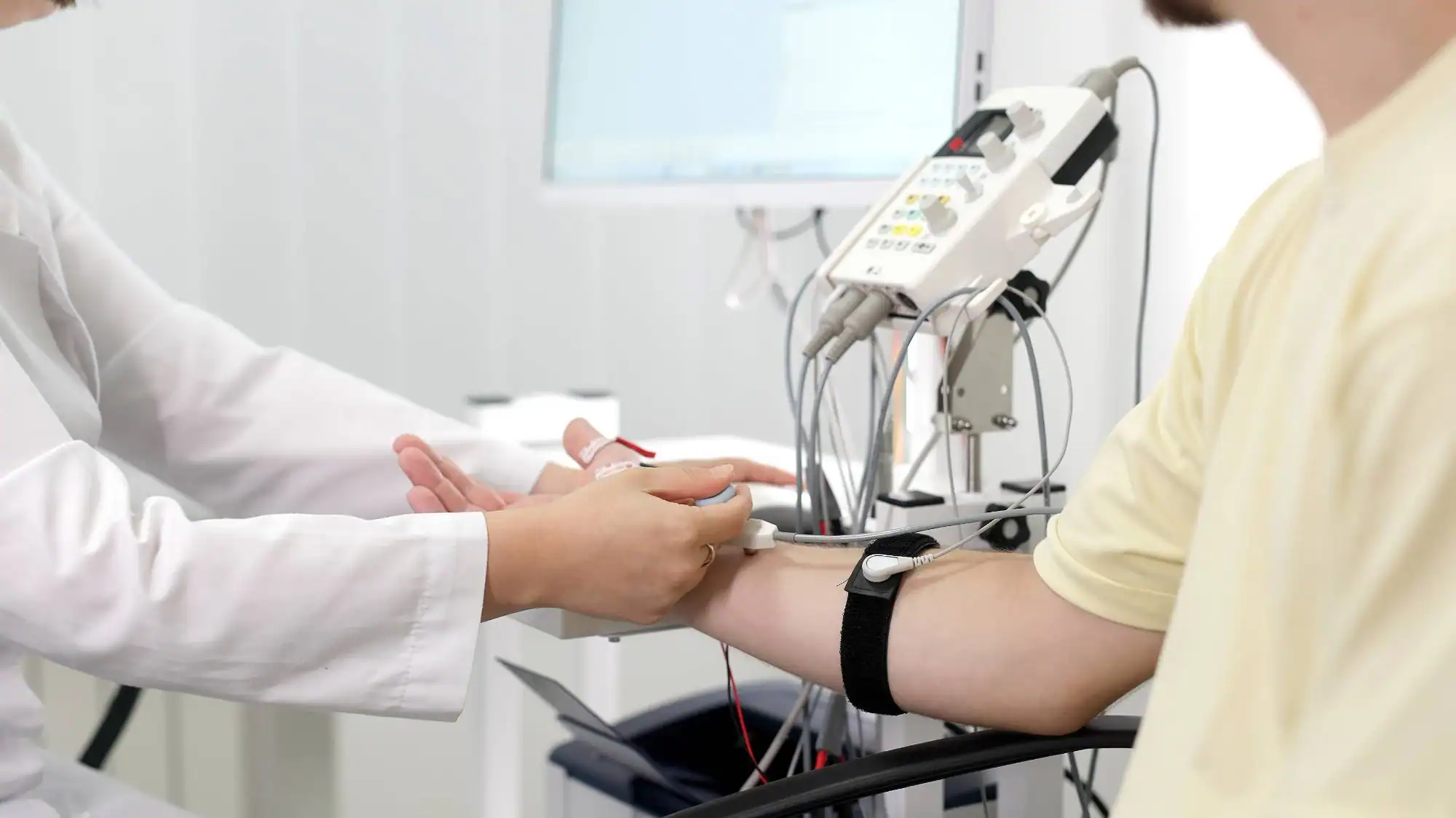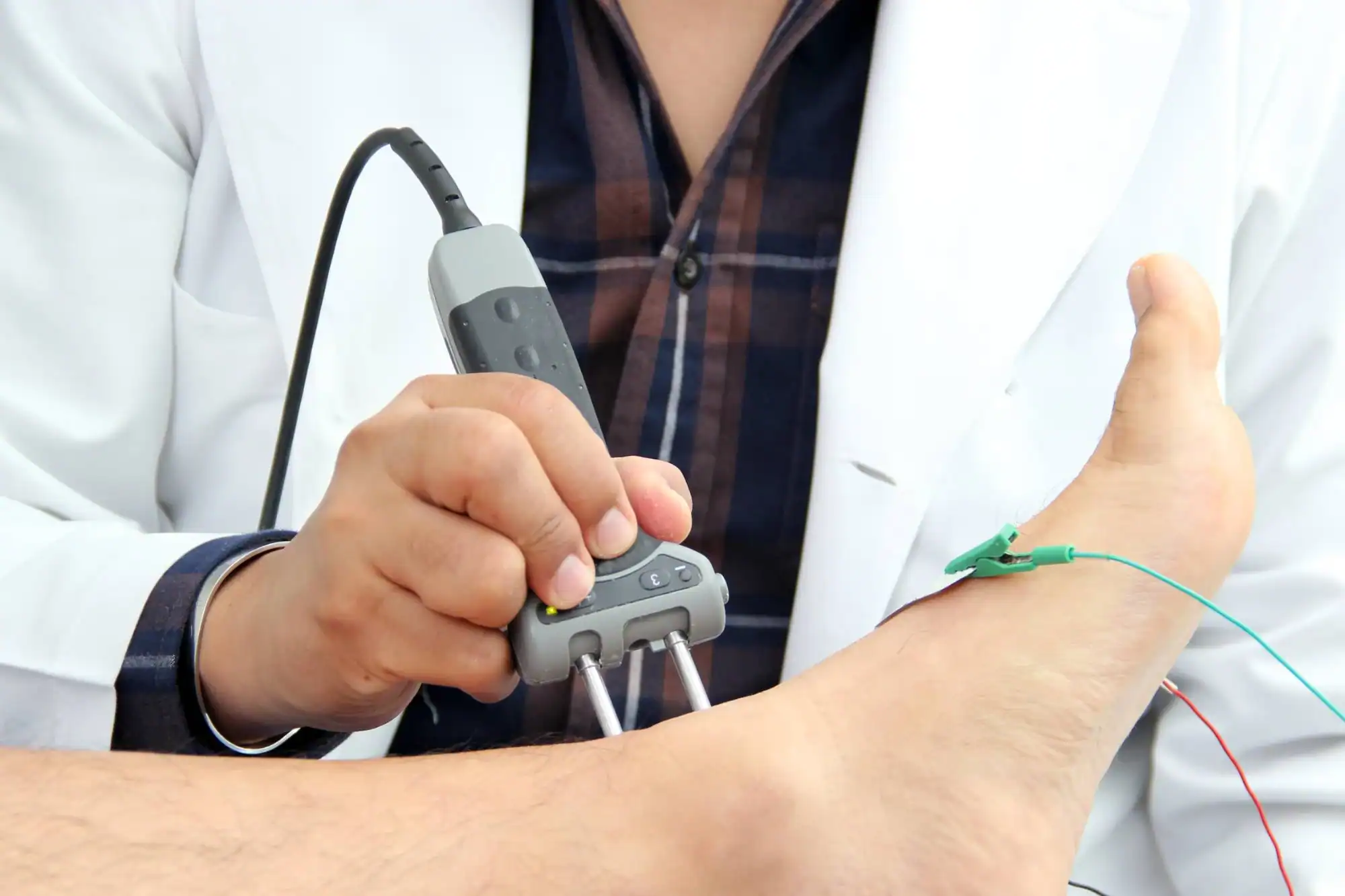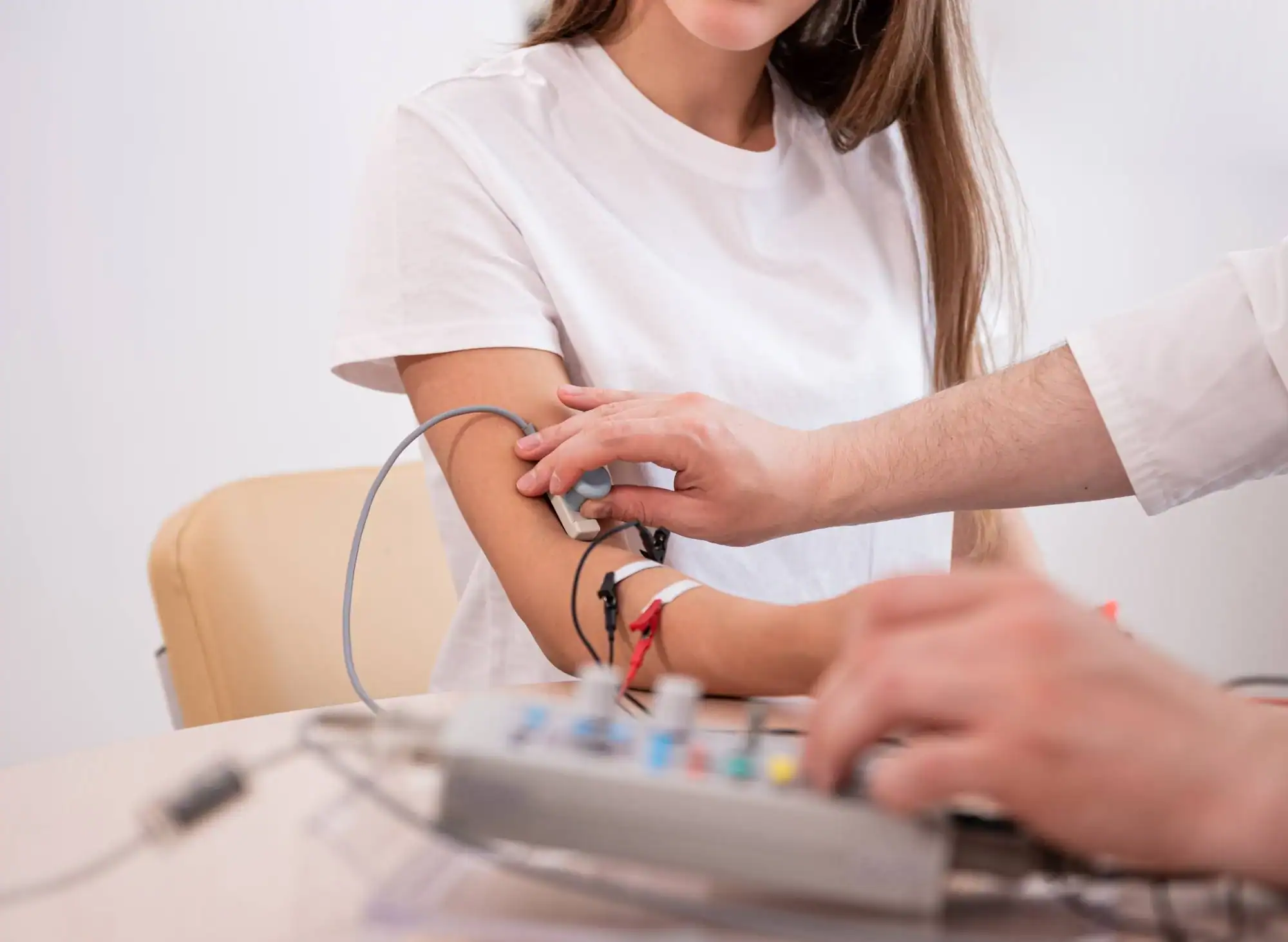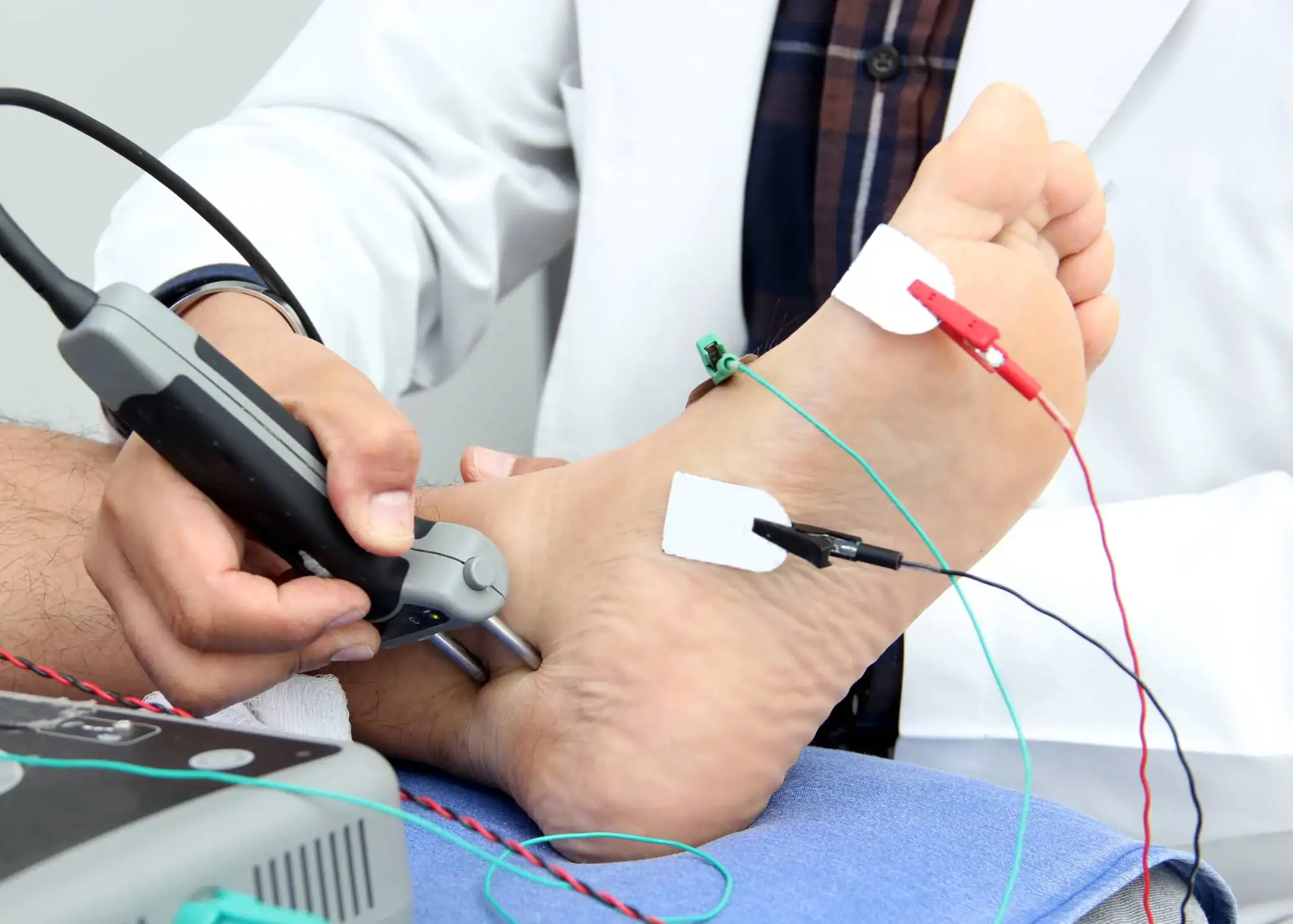Precise nerve and muscle diagnostic testing to identify what’s causing your pain, numbness, or weakness.

Reviews

You’ve been dealing with symptoms that don’t make sense. Numbness that comes and goes. Muscle weakness that’s getting worse. Pain that shoots down your arm or leg without explanation.
Nerve and muscle testing gives you the clarity you need. Instead of guessing what’s wrong, you get precise information about how your nerves and muscles are actually functioning.
When you know exactly what’s happening in your body, you can make informed decisions about treatment. No more wondering if your symptoms are serious or if they’ll get worse. You’ll have the diagnostic information you need to move forward with confidence.
NY Spine Medicine has been providing specialized diagnostic testing to Manhattan residents for years. Our team understands that when you’re dealing with nerve and muscle symptoms, you need answers fast.
Located in Two Bridges, our practice focuses specifically on comprehensive nerve and muscle evaluation. This isn’t a general practice trying to do everything – we’re a specialized center that knows exactly how to identify what’s causing your symptoms.
Our physicians work closely with your referring doctor to make sure you get the testing you need and that your results are clearly communicated to everyone involved in your care.

Nerve and muscle testing involves two main components: electromyography (EMG) and nerve conduction studies. Both tests work together to give a complete picture of how your nervous system is functioning.
During nerve conduction studies, small electrical impulses are sent through your nerves to measure how fast and effectively they’re transmitting signals. This identifies problems like nerve damage, compression, or inflammation.
EMG testing involves inserting thin needles into specific muscles to measure their electrical activity. This shows whether muscle weakness is coming from the muscle itself or from nerve problems affecting the muscle.
The entire process typically takes 30-60 minutes depending on which areas need testing. You’ll get your results immediately and have time to discuss what they mean for your specific situation.

Ready to get started?
Your nerve and muscle testing includes a complete evaluation of the areas causing your symptoms. Whether you’re dealing with back pain that radiates down your leg, arm numbness, or unexplained muscle weakness, we customize the testing to your specific concerns.
You’ll receive both EMG and nerve conduction studies as needed, along with a thorough interpretation of your results. We explain what the findings mean in plain language, so you understand exactly what’s happening with your nerves and muscles.
Results are immediately shared with your referring physician, and you’ll receive copies of all reports. If additional testing or treatment is recommended, you’ll get clear guidance on next steps and referrals to appropriate specialists when needed.
